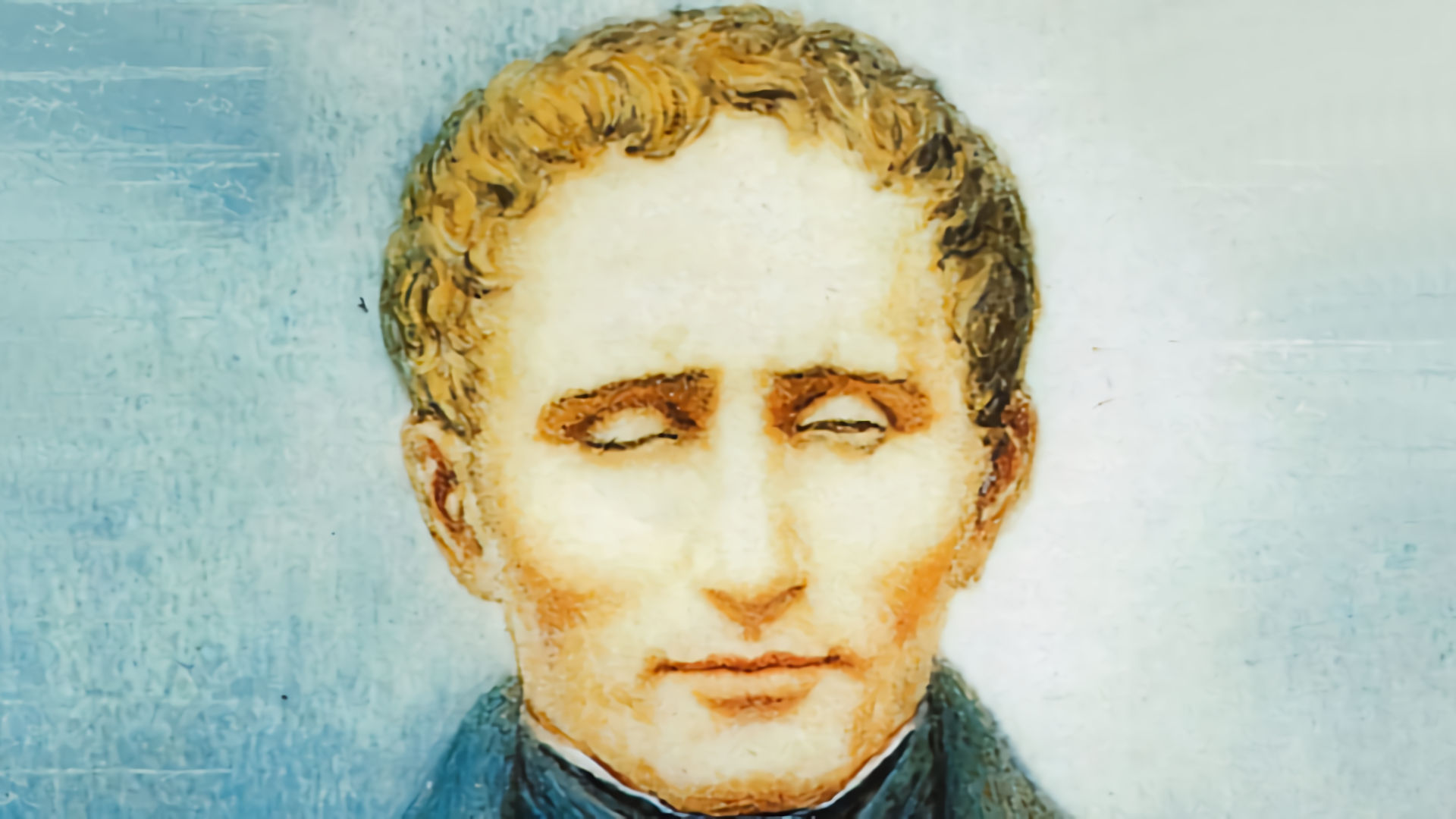Louis Braille
Louis Braille Biography
Born on 4 January 1809, Louis Braille was from a small town called Coupvray, which is about twenty miles East of Paris, France. He was the youngest of four children born to Simon-René, who was a leatherer and maker of horse tack and Monique Braille. His two older sisters were Monique Catherine and Marie Céline, and his brother was called Louis-Simon.
The young Louis was always interested in his father’s work, and from the time when he could first walk, he could be found in his father’s workshop. One day, when he was only three years old, Louis was playing with an awl and was trying to make a hole in a piece of leather when the tool slipped and struck him in the eye. A local physician did the best he could with the boy’s injury and then arranged for him to see a specialist in Paris the next day. However, the surgeon could do nothing else to help and due to a severe infection which eventually spread to the other eye, by the age of five, Louis Braille was completely blind.
His parents did the best they could to raise their son to be as normal as possible, and he learned to get around with the use of a cane, which his father made for him. As he grew older, Louis seemed to accept his disability and made efforts to be the best that he could be, which impressed local teachers, leading to him being accepted into higher education in 1819 at the Royal Institute for Blind Youth in Paris, one of the first specialist schools for blind students in the world.
The children at the school were taught to read by a system that had been created by Valentin Haüy, the founder of the school. Haüy wasn’t blind himself but had dedicated himself to helping those who were. Haüy’s method involved using heavily embossed letters on thick paper, which the children were taught to read by tracing the letters with their fingers and thus read the exact words as any sighted child, albeit a lot more slowly. The books that were available to the children were limited, as the process to create them was complicated. Also, due to their nature, the books didn’t contain a considerable amount of information, and some were large and heavy. The other thing that was lacking was a way for the children to not only read but also to write.
When the school opened, it had three books, and Louis Braille read them all continuously. He also paid attention during oral lessons and was an avid learner. When the school curriculum came to an end, Braille, due to his proficiency as a student, was asked to stay on as a teacher’s aide. By 1833, he had achieved the position of professor at the school and taught a number of subjects, including history, geometry, and algebra. Braille was also very good at music and learned to play the cello and the organ. His musical talents would be recognised all over France during his later life as he would travel and play the organ at numerous churches.
The limits of Haüy’s system were obvious to Braille, and he was determined to improve upon it; however, Braille came across a system that would ultimately revolutionise how blind people would learn to read. In 1821, Louis Braille became aware of a system developed by Captain Charles Barbier of the French Army, who called it night writing. This system involved a code of dots and dashes that were impressed into thick paper, and which could be read by using the fingers, meaning that soldiers who needed to communicate written orders in the dead of night could do so with no need for any lighting whatsoever.
Over the next three years, Braille worked on improving the system to make it more efficient and less complex. By 1824, he had finished and published the system the following year. He continued to make improvements, though, and when the system’s second edition was published in 1837, Braille had removed the dashes from the system altogether as they were proving difficult to read. Ironically, Braille made the impressions of each cell, which consisted of six raised dots with an awl, the same instrument that had blinded him when he was a child. It wasn’t too long before the system was yet further improved to allow for the writing of music.
Unfortunately for Braille, the school where he taught didn’t adopt his idea as the successors to its founder, Valentin Haüy, saw no reason to change the method he had devised. In fact, the school was actively hostile to Braille’s system.
By the time Louis Braille was forty years old, he was forced to give up his teaching position due to his declining health. He had always been a sickly child and suffered from a respiratory problem, which was most likely tuberculosis. He died as a result of the illness at the Royal Institution’s infirmary on 6 January 1852 at the age of 43.
Two years after his death, due to unrelenting pressure from its pupils, the Institute finally adopted Braille’s system in 1854. The use of the system spread quickly throughout France, and after an all-European conference of teachers in 1873, its adoption internationally accelerated. By 1916, it was deemed that there was probably no institution in the world that did not use Braille’s system. Today, almost two hundred years after its creation, Braille continues to be one of the most powerful and lasting utilities of all time.
Louis Braille FAQ
Louis Braille was a French educator and inventor who created the Braille system, a tactile reading and writing method for blind and visually impaired people.
He was born on January 4, 1809, in Coupvray, France.
He lost his sight at the age of three after injuring his eye in an accident and developing a severe infection that spread to both eyes.
He developed the Braille system in 1824, when he was just 15 years old, building upon a tactile military code devised by Charles Barbier.
He died on January 6, 1852, in Paris, France, at the age of 43.
[this article originally appeared on 5MinuteBiographies.com on 11 July 2019]






